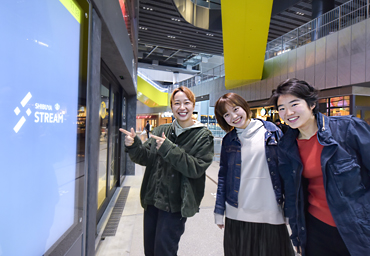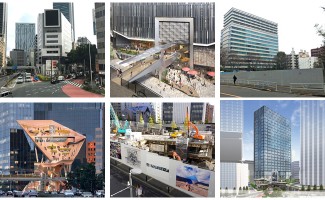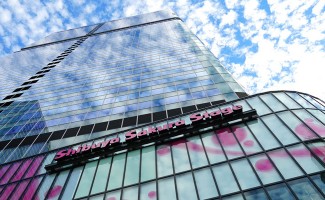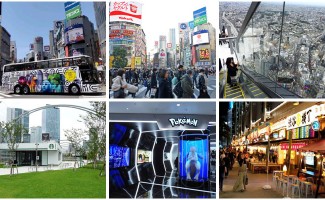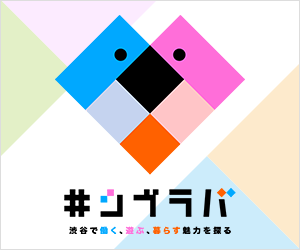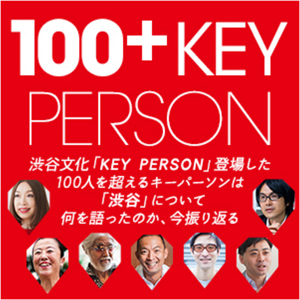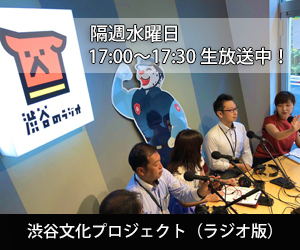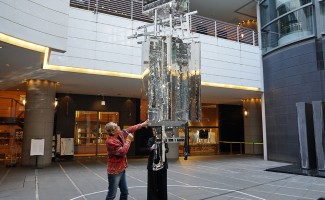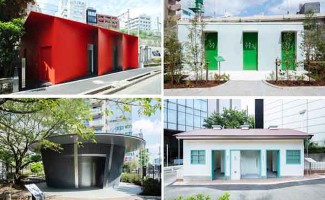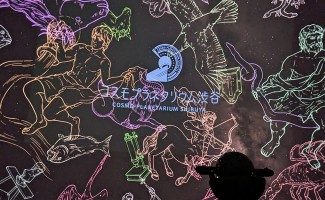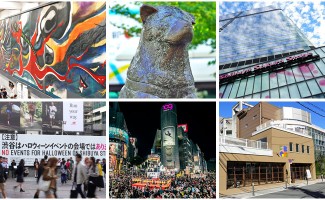From November 20th to December 19th, 2019, “Hachiko Shrine” appears on the digital signage next to SHIBUYA STREAM 2nd Floor Information. This shrine can be called from a Google Assistant such as a smartphone, and when you declare your “Goals” or “What you want to achieve”, the declaration is projected to Hachiko Shrine on digital signage. Clearly setting your goals like a shrine ema will lead you to the first step toward achieving your goals. In fact, this program was held from May to August this year at the BranCo! Special Edition, a brand innovation design contest held by Hakuhodo Brand Innovation Design and the University of Tokyo's College of Liberal Arts. The idea proposed by is realized as a prototype. In the same contest for students, also known as the Koshien of planning, we received high acclaim from Tokyu, Google, and Hakuhodo. Nanako. In releasing “Hachiko Shrine”, we interviewed the three people in detail, from how they participated in the contest to how they proceeded to create and develop planning ideas. From the negative image of Shibuya, such as “smell”, “dirty”, and “messed up”, how did you finally reverse the idea? Let's take a look at the talk between the three.
<Reference>
»BranCo! Special Edition Official Website
Team formation with unfamiliar musical friends
_Everyone is different in college and age, where and how did you meet?
White:We are the members we met musically (laughs). There is a theater company that develops nationwide.
Shimazu:I've already quit. I did it for about 2 years.

Shika Haku
White:In the theater company centered on junior and senior high school students from little children, we were like the same. Everyone was very good, I couldn't keep up, and it wasn't like a new member welcome. And maybe we all were strange and there were parts that we didn't get used to (laughs).
Sugimoto:(Laughs) Even at the same university student, there was a child of the Musical Department of Music University, I was too musical beginner, and I was quite frightened.
Shimazu:That's right, it seems that the strangers have become friends (laughs).
Sugimoto:This time, Shika-san invited me to do BranCo! Together, and it started when I started with a light glue like two people would do. It feels like it has grown so far.
Shimazu:But with BranCo !, the bond between the three was deepened.
_そもそも、白さんが2人をBranCo!に誘ったきっかけを教えてください。< />
White:I have to say, but in fact, I had tried BranCo! With another member before and only passed the first qualifying. I felt regretful and wanted to revenge, but I was wondering if I would participate in job hunting. Under such circumstances, when I contacted the OB of Hakuhodo, I couldn't get an appointment, but for some reason I was informed of the participation of “BranCo!”. I was hoping for the advertising industry, so when I heard the briefing, it seemed interesting. Then, when I thought about who I would do with, two people first came to mind.
Shimazu-Sugimoto:I'm so happy!
Now, three people participated in “BranCo! Special Edition”, but I think that regular BranCo! Can be planned quite freely for the subject, but the special edition is for clients (Tokyu, (Suntory, Skylark) has been decided, and “Google Assistant” has to be used as an output tool. There were many conditions, but was it easy to plan? Or was it difficult to do it?
Sugimoto:There are three conditions, and the first is to think about “Digital Wellbeing”, the theme of BranCo !, and then you have to use Google Assistant, “OK Google”. Lastly, you have to choose one of the challenges of Tokyu, Skylark and Suntory clients.
Shimazu:It was really difficult because I was surprised by the three bindings. A good idea came out! Even if I thought, I didn't meet one condition, and this time, if I thought that condition was cleared, another element was thinned or missing ...
_I'd like to sort out and ask, but do you use AI assistants such as "OK Google" every day?
White:I use Siri.
Shimazu:I don't use it at all.
Sugimoto:I just searched with a normal Google app and never used the Google Assistant.

Left) Nanako Sugimoto Right) Yasune Shimazu
_Then, to think about this issue, I tried it from "OK Google". How did you actually use it?
White:No, can I say this (laughs)? To be honest, I wasn't as smart as I thought. As for artificial intelligence, I thought that I would learn more and answer anything in life consultation, but I could not get the expected answer.
Sugimoto:There are many cases where the answer I want doesn't come back from the AI assistant, so I can't use it.
Shimazu:That's why I felt I wanted more development.
_ If you look at the three people talking like this, you can imagine that Brest was also doing something fun. By the way, what tools and methods did you use for planning meetings?
3 people:LINE phone!
Shimazu:I ca n’t stop talking.
Sugimoto:I can't catch up with the text (laughs).
White:Of course I shared a lot on LINE, but basically the phone is the main.
Sugimoto:Shika-san is good at organizing texts, but when I hit them with letters, I don't know what they are saying.
White:She (Mr. Sugimoto) is good at writing pictures in sketchbooks.
Sugimoto:That's why I like to show pictures and show them together ...
White:It seems that I did the work of theoretically fleshing out the idea that the three people made and working as a word.
By the way, do you live nearby?
Shimazu:Perhaps everyone is along the Toyoko Line.
Sugimoto:I had met at Gust about once a week. I think we had a closer meeting than the other teams.
Shimazu:The store clerk told me "Please come back now."
Sugimoto:Until the store closes (laughs).
White:I was calling almost every day just before the presentation. Since everyone was quite busy, I often called around 1 or 2 o'clock at midnight.

From left: Daiki Ota (Tokyu), Mr. Sugimoto, Mr. Shimazu, Mr. Shiro
Exhale everyone's "worries" and visualize it with signage
_Did you have a lot of meetings? Of the three client companies, you chose Tokyu's assignment, but was it decided immediately?
White:First of all, we discussed the “Digital Wellbeing”, which is the theme of this special edition of BranCo! Our well-being is “I really can say that.” I think that I can live better mentally if I can say it.
Sugimoto:Tokyu is a space and place that can be used by Tokyu, who is promoting urban development in Shibuya, rather than companies that provide products and services such as Suntory and Skylark. I think we can do big things.
White:Because of the image that the city seems to be more interesting and wider than things, I chose Tokyu's assignment.
_Tokyu-san's topic was "How to stimulate SHIBUYA LIFE to stimulate more people". Please tell us about the relationship and image between you and Shibuya.
White:I'm from an elementary school in Shibuya Ward, and I've done the cleaning of the loyal dog Hachiko statue. I live in Meguro now, but I used Shibuya since I was little.
Sugimoto:I also lived about 10 minutes by train from Shibuya Station, and I used it almost every day because I went to the INOKASHIRA LINE from Shibuya. However, as soon as it became the theme of Shibuya, only three people came out badly (lol).
Shimazu:Smelly, dirty, messy, noisy, a lot of parisi ...
Sugimoto:When I went to school in the morning with a large baggage when I was in high school, there were too many people to get on the escalator. I was frustrated in the morning and my personality was getting worse.
Shimazu:I use only transfers. Shibuya is familiar, but it is not my favorite city.
White:Maybe I'm the most involved in Shibuya. I still go to Shibuya dance classes every week and drink tapioca on my way home. There are many places in Shibuya where you can meet friends and drink alcohol at two stations from the university and home. I participated in Shibuya's Halloween two years ago, so it was a lot of fun to dress up as a “Beauty and the Beast” bell and work with foreign friends. There are many problems, but I like it personally.
Shimazu:It's stressful to have a lot of people in everyday life, but it's fun to gather together and do it.
_Because it is a node of traffic when you do with friends, it may be attractive to gather easily. Shibuya has a strong negative image, but what kind of thought did Tokyu-san give to the students this theme?
Ota:Currently, we are conducting large-scale development projects with the slogan “Entertainment Citi SHIBUYA”. In order to make Shibuya a more entertaining “entertainment town” where various people gather together, rather than having a negative image, we would like to make proposals based on new free ideas that are not tied to students' stereotypes. I'm sure it will be interesting. In addition, we decided to make this theme the subject of the expectation that we could work as a company if a feasible idea came out.
_It seems that you received suggestions from about 30 team students this time. How did you make the first qualifying?
Ota:At the beginning of May of this year, about 30 team students gave presentations together with our company, Google, and Hakuhodo. Six of the teams with the highest evaluation passed the qualifying.
_How was it when you listened to your ideas? Something inspired me and I still think ...
Ota:There was both, and there was impression that was considerably gathered up. I was hoping for ideas that were far more frustrating, and ideas that adults would never think of. On the other hand, there was also a suggestion that the edge works, but honestly rough, but the idea is interesting. For example, their team was one of them, and it was an idea to display “human trouble” on digital signage, but I felt that the insanity was unique.
_ The first planning idea is important, but it may have greatly influenced your selection.
Ota:Well, I wonder if the perfection during the first qualifying does not have to be so high. After the qualifying, there were several workshops planned for the final, and I thought that the ideas would gradually be refined. The organizers also said that “It doesn't have to be so complete” at the time of selection. In fact, even though the degree of completion of the presentation was high, some teams failed in the first round of qualifying, so whether the presentation was good or not did not directly affect the selection results.
White-Shimazu-Sugimoto:It was so.
Ota:With three steps: input (research), concept, and output (design), we chose a team that is interesting in input and concept. The same is true for the girls, saying, “When you come to Shibuya, you are one of the majority, so you are not lonely.”
Shimazu:All three of us realized that there was a sense of security that was buried because there were so many people.
White:There is a way of thinking “I don't like being crowded!”, But this person (Mr. Sugimoto) seems to have been walking in Shibuya crying. It ’s annoying when I ’m home alone and crying, but it ’s a little relaxed in a crowded crowd of people….
Sugimoto:There was something I was worried about at the time, and I was walking around Shibuya while crying as I went back to my club activities. From the other side, I was just a passerby, and I felt that I was just one of the passers-by from here. It feels like a tragedy heroine when you are depressed, but Shibuya feels like it.
Shimazu:Realistic Twitter or anonymity. There is such an image.
_Surely in Shibuya, the existence of an individual is one of them, and it is buried. The idea is not to deepen isolation, but rather to feel secure. Is it your first idea to talk to your Google Assistant about your worries?
White:I wish I could have a "consultation" with the Google Assistant ... I thought that AI was still not capable, so I decided to think of digital signage as the main thing only as a medium.
Sugimoto:AI assistants don't give you the best answer, but they can help you. If you say something, it will always return something. For the time being, I will try to hit my “worries” with Google Assistant.
Shimazu:This is reflected on the big signage as it is, and it makes you realize that even your own troubles are one of everyone's troubles. For example, if it is displayed on the digital signage at a Shibuya scrambled intersection, the reality of the person walking at the intersection is visualized.
_For example, what kind of trouble do you have?
White:You can really do anything, you can test it or go to the bathroom.
Sugimoto:Do you overeat or do not get along with your family?
Shimazu:Anything is okay, but I think that worries are meaningful in spit out.
Sugimoto:Signage has a lot of troubles with people, and if there are people who have the same troubles as me, I can sympathize with them. It's too dark, but if you have a person who is in a worse environment or in a worse environment than you, you will feel assured that you don't have much to say.
By the way, do you have any team name?
Sugimoto:It's "Mochimochi no Ki!" It's really random (laughs).
White:Because everyone is motivated.
Sugimoto:Is that so? I haven't heard of that (laughs).
Shimazu:No, the image of “Hanasakiyama” from the output image overlapped.
White:There is a picture book called “Hana Sakiyama”, and it is a story that if you endure something, the flower will bloom. It looks like that mountain cut ... like ... However, the picture book “mochimochi no ki” by the same author has more impact than “Hanasakiyama”.
Shimazu:It ’s more cute.
Sugimoto:And that the team name has been decided ... quite appropriate (laughs).
_So how did Tokyu-san hear about the presentation of “Mochimochi no Ki”?
Ota:The inspirational idea of putting their characters and “worries” on signage is interesting. I chose it with the expectation that it would be even more interesting after the first qualifying. But what if the signage shows a lot of such negative voices? I thought there was a problem with the actual output (laughs).
